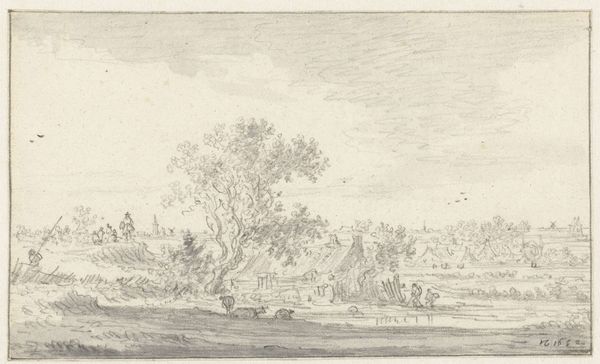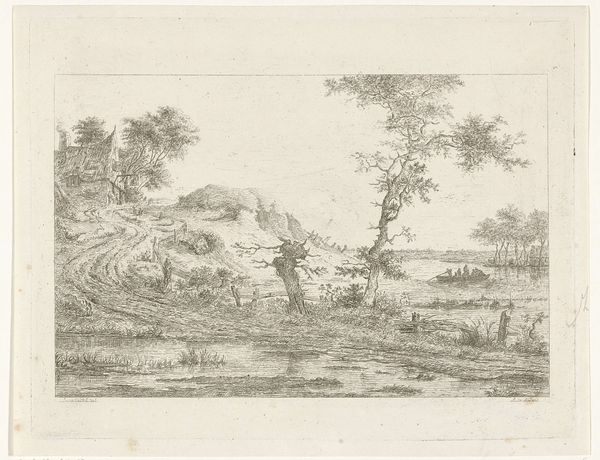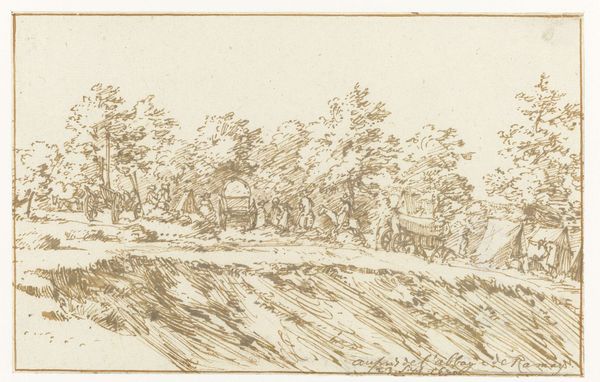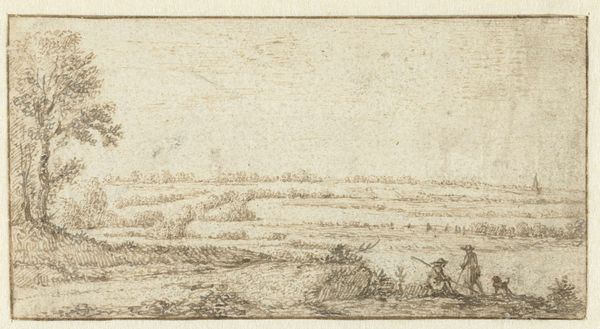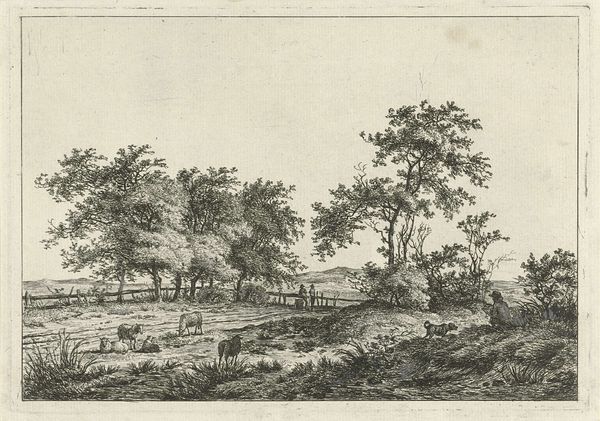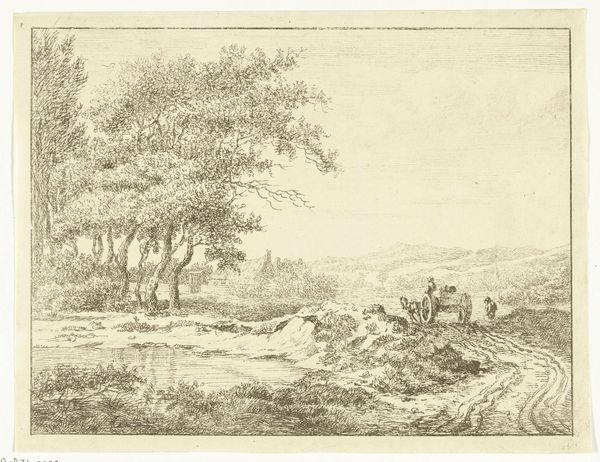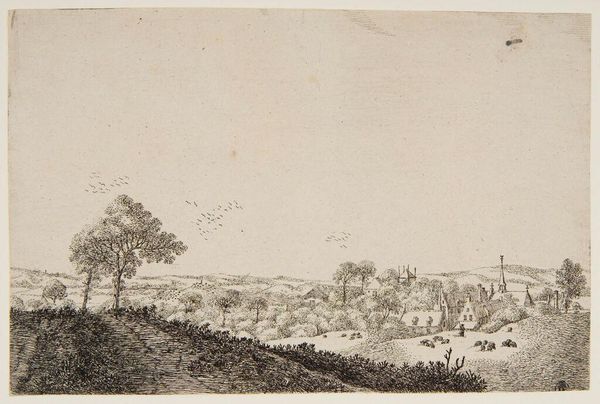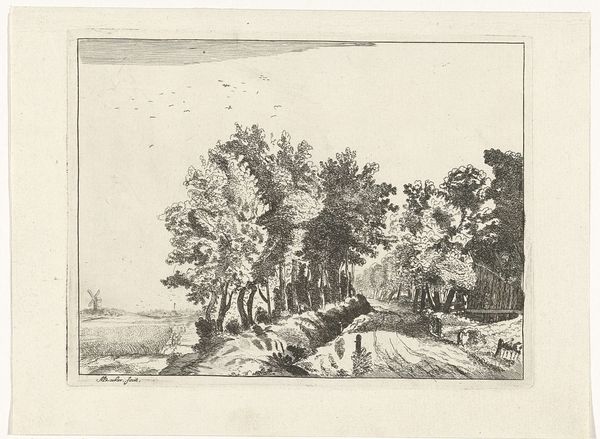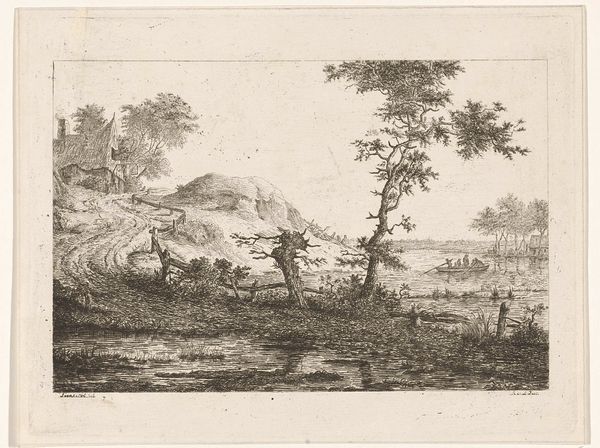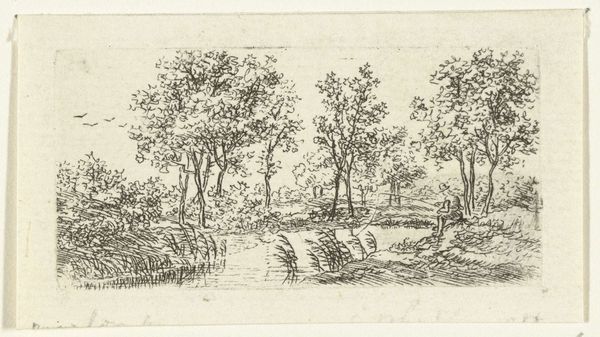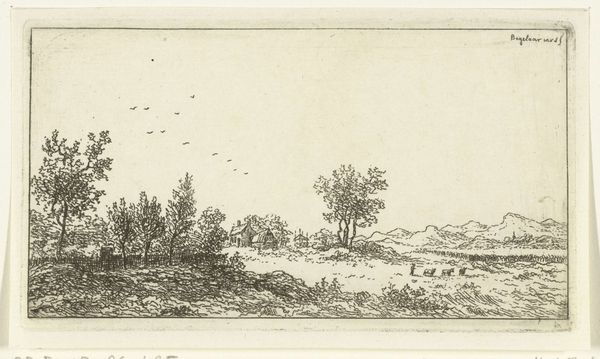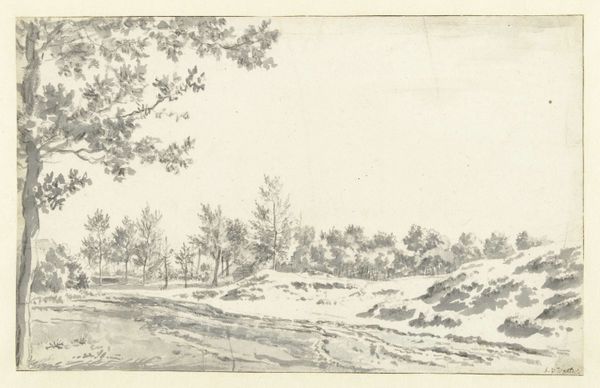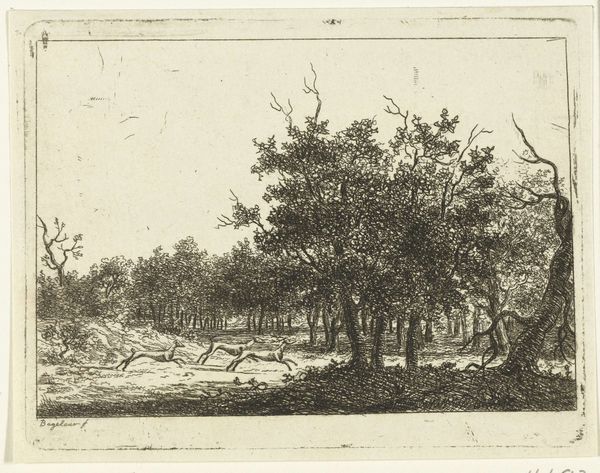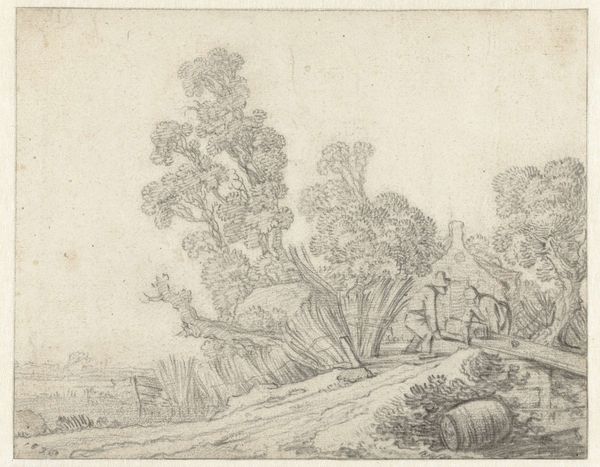
print, etching
#
narrative-art
# print
#
pen illustration
#
etching
#
landscape
#
line
#
genre-painting
#
history-painting
Dimensions: height 115 mm, width 168 mm
Copyright: Rijks Museum: Open Domain
Editor: This etching by Mathias de Sallieth, “Aanhouding van de prinses bij Goejanverwellesluis, 1787,” presents quite a scene! It depicts a landscape filled with figures and carriages. The line work is incredible, yet somehow conveys a feeling of disruption. What details stand out to you the most when considering its historical and artistic context? Curator: It's fascinating to see this event, a key moment of political upheaval, rendered through etching – a readily reproducible medium. Consider the choice of line etching. Its accessibility meant that the image could be disseminated widely, turning this specific incident into a widely debated public narrative. How might the artist’s choice of a readily reproducible medium impact its reception and purpose? Editor: That’s a really good point. So, it wasn't just about capturing an event but also about mass-producing an opinion, in a way. With line etching, there are a few specific skills that need to come together to produce something with this level of clarity, but how might its artistic classification reflect the economic context and distribution involved? Curator: Exactly! The classification and consumption of the etching highlights a tension between high art and the labor involved in its creation and distribution. The market of such work blurs class lines; what are the implications of the use of prints, as a medium available to the masses, to portray such a pivotal moment of disruption amongst aristocracy? Editor: That makes me think about the viewers, then and now, and how class plays into its role. So, it isn't just the image, it's also the production process and the networks of distribution. I’ll definitely view the materiality differently from now on. Thanks. Curator: And seeing how social issues from the past find their voice through easily produced materials allows for critical commentary on history and printmaking itself. Food for thought!
Comments
No comments
Be the first to comment and join the conversation on the ultimate creative platform.
